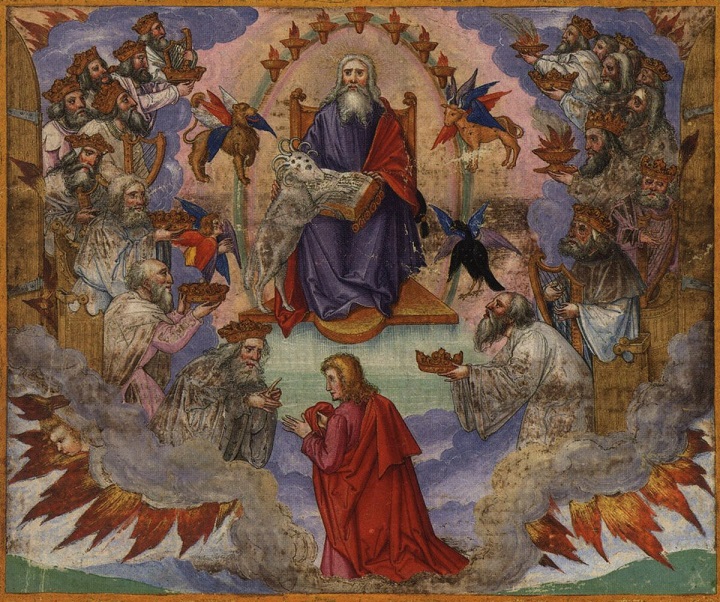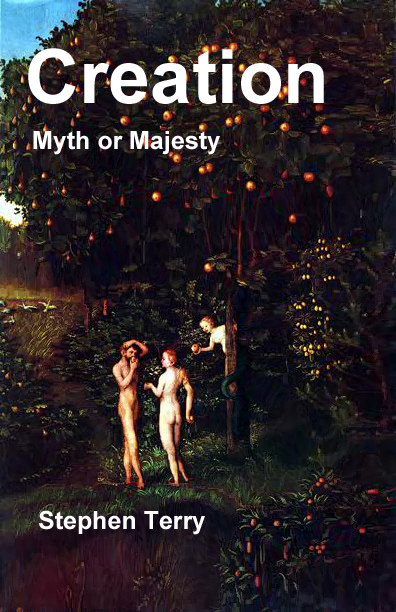
Stephen
Terry, Director

Worthy
Is the Lamb
Commentary
for the January 26, 2019 Sabbath School Lesson
 “Then I saw in the right hand of him who sat on the throne a scroll
with writing on both sides and sealed with seven seals. And I saw a mighty
angel proclaiming in a loud voice, ‘Who is worthy to break the seals and open
the scroll?’” Revelation 5:1-2, NIV
“Then I saw in the right hand of him who sat on the throne a scroll
with writing on both sides and sealed with seven seals. And I saw a mighty
angel proclaiming in a loud voice, ‘Who is worthy to break the seals and open
the scroll?’” Revelation 5:1-2, NIV
In the previous chapter, John described the state of the
seven churches which were closest to his place of exile on Patmos off the
Southwestern coast of Asia Minor. Now we make a transition from present reality
to Jesus coronation ceremony. Perhaps this serves as a further illustration
that depictions based on a linear timeline are not the objective of John’s
narrative. Why do I say this? The preferred Seventh-day Adventist narrative
necessitates it. Our understanding of this scene that unfolds in Revelation,
chapters four and five, place it at the time of Pentecost when the Holy Spirit
was poured out as described in Acts.[i] This is perhaps founded
upon Jesus statement that he could not send the Holy Spirit unless he goes
away.[ii] The Bible does not specifically
say that Jesus must receive his coronation in order for that to happen, but
Ellen White equates the two.[iii] Therefore since the
Revelation was, per the author’s testimony, written in the latter half of the
first century while he was exiled on Patmos, that would necessitate a trip at
least twenty years and likely more into the past to observe that event. In
order to maintain a linear temporal progression from John’s present situation
on Patmos and his ascension to the coronation of Jesus, we would have to negate
Ellen White’s testimony in her writings and any sense of her infallibility when
it comes to her narrative regarding the Apocalypse. Rather we shall suspend any
need to adhere to a progressive timeline for John’s Revelation that this scene might
logically accommodate both Ellen and the Fundamental Beliefs of the Seventh-day
Adventist Church. This may serve our purpose well in the future as we examine
Revelation further, should we come into conflict with some of the
interpretations and timelines of Uriah Smith’s, “Daniel and the Revelation.”
Although he has often been quoted, the denomination claims no inspirational
equality for him with Ellen White.
The question that continues to bedevil our understanding
of Revelation is “How much of the book is literal and how much is metaphor?”
This question has not been helped by two complicating facts. The first is that
it purports to reveal future events which no one can verify because they
haven’t happened yet and are couched in ambiguous symbols. The second is that
John, due to the limitations of his culture, education and experience was
limited to describing what he saw to things he could relate to. For instance,
he assuredly knew what locusts were, but does that mean that what he saw and
described as locusts were such? Therefore it is difficult to know for certain
how far off accuracy of any interpretation might be. This does not mean that
the Book of Revelation is useless to us. It can be very useful for Christians
in every age if we focus on principles rather than trying to wring every
possibility at literal understanding from a text that does not lend itself to
such. Unlike the Book of Daniel which repeatedly presents clearly defined
timelines for world history, Revelation does not, instead skipping back and
forth and not identifying where we are historically. Instead, historical
perspective is more often applied by the reader based on assumptions and biases
developed and perhaps even inculcated as a result of previous denominational
obligations.
We also should perhaps note that even John’s status in
these chapters is ambiguous. Was he physically present for the coronation? Some
might assume that was not the case because of his phrase “in the Spirit.”[iv] But consider yourself as
a first century former fisherman traveling through a doorway in time.[v] How would you describe the
experience? Would you have an understanding of physics and relativity that
would allow you to see it more accurately? For that matter, would your readers
be able to understand it if you could? Unfortunately, the limitations of his
understanding continue to color our ability to understand what took place even
now. We cannot definitively determine whether John was having a vision or
actually present for the coronation. But there are passages that may help. For
instance, Paul also speaks of the ambiguity of being “in the spirit.”[vi] He indicated that in
regards to visions, he could not tell whether the experience was an
out-of-body, spiritual one as opposed to a corporal experience. Another example
can be found in the Mount of Transfiguration experience.[vii] Where Moses and Elijah
actually present, or was it all simply an illusion concocted to impress the
disciples present? The latter illustration may be more easily accepted as
corporeal because it does not necessitate any time manipulation since it is
assumed from the biblical narrative that both went to heaven and could simply
drop by for a visit. For our purposes, how we look at these things can be
indicative as to whether, in a situation like John’s, the person is actually
experiencing time shifts or if it is simply a mental illusion imposed by
external factors. Perhaps because of our limited perspective, we find it easier
to believe that God can manipulate a human mind to see things that aren’t
really there. But God, who exists everywhere and at every time, may be capable
of substituting one reality for another simply by shifting dimensional
perspectives.
It is important to remember, however, that we need to be
aware that our perspective tends to reduce God to a God-in-a-box manifestation
of who he really is. If we relegate all of his interactions with us to
ephemeral communications, we are placing him in a box. But likewise, if we
define him without such limitations and expand his power to encompass the
manipulation of time and dimensionality beyond our own experience, we
necessarily place him within a box, albeit a much larger one. We may not have
the ability to define God beyond the box of our own limited perspective. But we
may at least wish to allocate to him a definition that grants him as much power
and presence as we are capable of granting. Over time as our knowledge of
relativity and the flexible diversity of Creation has progressed, perhaps our
ability to construct ever larger boxes to define what we can perceive of God
should progress as well.
Even if we accept John’s experience in these two
chapters as corporeal, and even if we accept the ability of God to negate
differences of time and space, we are nonetheless left with John’s limited
ability to define what he sees. Jesus’ appearance seems to shift dramatically
from the glowing figure in chapter one to the lamb in chapter five. If this is
an ephemeral vision, it is explained by simple dreamlike shifting as one vision
flows into another. If it is corporeal, then it may identify additional
information about God. If his corporeal shape is fluid, it may be beyond
consistent portrayal over time. Of course this may obviate our attempts to
assign such things as gender to God, in spite of our persistence in labeling
him as masculine. The Hebrew and Aramaic of the Old Testament use a feminine
word to refer to the Holy Spirit and the New Testament Greek uses a gender
neutral word. Often these gender-based nouns derive from some attribute in the distant
past that may be perceived as identified with one gender or another, even if
the present users do not know what those traits may have been. We have this in
English to some degree, in spite of our general avoidance of gender with nouns.
We often refer to cars and boats as “she,” even though we don’t know precisely
why. If we struggle to understand gender in relationship to language, perhaps
we can understand the undefinable nature of God due to our limited perspective
compared to his.
Additional takeaways may be seen in the importance of
the numbers seven and twenty-four. Repeated throughout scripture, they appear
to have more significance than simply being random numbers. Seven, even as seen
through our observance of a Sabbath every seven days has significance here as
well through the seven seals of the scroll. The number twelve has been
meaningful throughout as well, with the twelve tribes and the twelve apostles.
The fact that it is doubled still has relation to the 24 bi-weekly periods of priestly
service in the Old Testament Sanctuary and temple. In spite of its remoteness
to us and the ineffability of God, a commonality appears to exist that draws us
in to attempt to parse understanding from what is here. Whether we can learn
anything new from the experience may depend heavily on how firmly we are
steeped in previous knowledge. It is rumored that in countries that have such
wildlife, monkeys can be easily caught by making a small hole in a coconut and
placing a nut inside. The monkey, refusing to let go of the nut, cannot remove
his hand from the hole. Thus he is caught by his own intransigence. Hopefully
we can fare better in our trip through Revelation.
